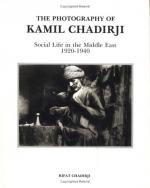|
This section contains 228 words (approx. 1 page at 300 words per page) |

|
Racist critics such as Faulkner were threatened not only by jazz music, but by the growing creative output among black poets, painters, authors, historians, playwrights, and traditional musicians. And just as Harlem was an important center of the jazz movement, it was also the birthplace of what was called the "New Negro" movement, or the Harlem Renaissance. Urged on by black leaders such as Marcus Garvey and W.E.B. Du Bois, African Americans, who faced grinding poverty and discrimination, were encouraged to celebrate their talents and their racial heritage.
The movement's most outspoken leader was West Indian– born Marcus Garvey, who, as a dark-skinned black, considered light-skinned African Americans to be inferior. To support this position, Garvey refused to carry advertisements for skin lighteners and hair straighteners in his newspaper, the Negro World. Garvey's other controversial positions included support of segregation and opposition to interracial...
|
This section contains 228 words (approx. 1 page at 300 words per page) |

|




